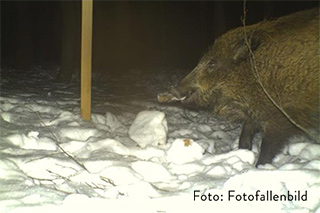Impact of shed antlers on wildlife, soil microorganisms and cadaver bacteria and fungi in the Bavarian Forest National Park
Motivation:
Abwurfstangen von Wildtieren fallen in großen Mengen an und sind aufgrund ihrer Knochensubstanz über sehr lange Zeiträume in Wäldern präsent. Das macht sie als tierische Langzeitobjekte der Zersetzung – analog zum pflanzlichen Totholz – sehr interessant und wertvoll, verglichen mit dem sich äußerst schnell zersetzenden tierischen Muskelgewebe. Genau dieser Aspekt motiviert uns, Geweihstücke kontrolliert im Nationalpark auszubringen und Langzeiteffekte auf den Waldboden (Nährstoffeintrag) sowie auf die Biodiversität der am Geweih fressende Tierarten (Schnecken und Wildtiere) und Mikroorganismen (Bakterien und Pilze) zu untersuchen.
Project aims:
We would like to discover what effects different masses of antler have on bone eating wildlife species (diversity, visitation time), snails, soil microorganisms, and the total bacteria and fungi on the distributed antlers (necrobiome). For wild animals such as wild boar, fox, and squirrel, we hypothesize that the number and species number at sites with antler pieces will increase and that they will stay longer there than at control sites without antler pieces. Based on experience from the necrobiome of animal muscle tissue, we believe that the biodiversity of bacteria and fungus communities on antlers, and in soil matter, will be significantly different to the control sites without antlers. Furthermore, the decomposition rate (mass lost over time) in relation to prevailing environmental conditions will be studied. This will be done under consideration of the “abduction rate” of the antlers (quantity of antler carried away by animals) by using metal cages at comparison plots.
Study design::
Expansion of the work from 2017 with the additional consideration of snail, bacteria and fungus diversity, and the antler decomposition rate (mass reduction with temperature). On ten study sites 1 and 10 Kg masses of red deer antler were placed in two sub-plots, with a third control sub-plot without antlers. On all plots, camera traps are present to record scavenger animals, snail traps are deployed, and standardized soil sampling for fatty acid analyses (estimate microbial biomass and amount of soil microorganism groups) is carried out. Additionally the antlers will be swabbed for the identification of changes in microorganism diversity during the decomposition process.
Funding:
- Bavarian Forest National Park administration
Ansprechpartner:
Dr. Christian von Hoermann
Scientific employee
Christian.vonHoerman@npv-bw.bayern.de
Prof. Dr. Marco Heurich
Head of department
Marco.Heurich@npv-bw.bayern.de
Collaborators:
- Prof. Dr. Liliane Rueß (Humboldt-Universität zu Berlin) fatty acid analyses of soil matter
https://www.biologie.hu-berlin.de/de/gruppen/oekologie_portal - Prof. Dr. Jörg Overmann (Leibnitz Institut DSMZ in Braunschweig)next generation sequencing of bacteria and fungi
https://www.dsmz.de/research/microbial-ecology-and-diversity-research/scientific-staff.html
Publications:
- Fischer S. (2017) Die Auswirkungen von Abwurfstangen auf Wildarten im Nationalpark Bayerischer Wald, project thesis
- Pascual J., von Hoermann C., Rottler-Hoermann A-M., Nevo O., Geppert A., Sikorski J., Huber K. J., Steiger S., Ayasse M., Overmann J. (2017) Function of bacterial community dynamics in the formation of cadaveric semiochemicals during in situ carcass decomposition, Environmental Microbiology, doi:10.1111/1462-2920.13828



